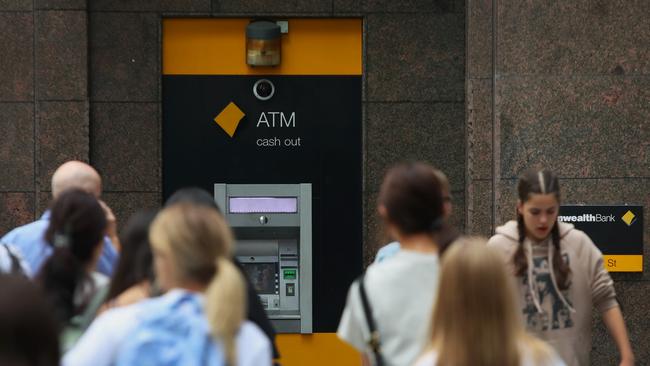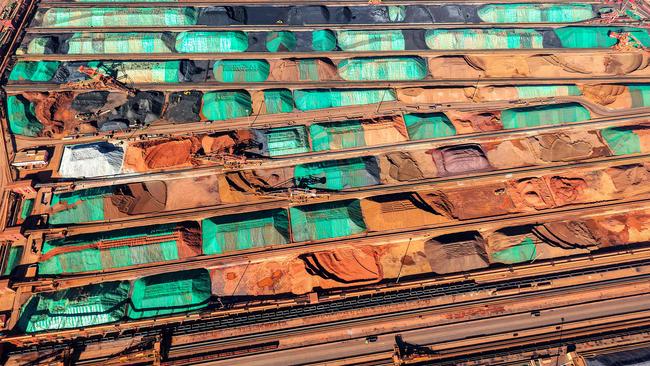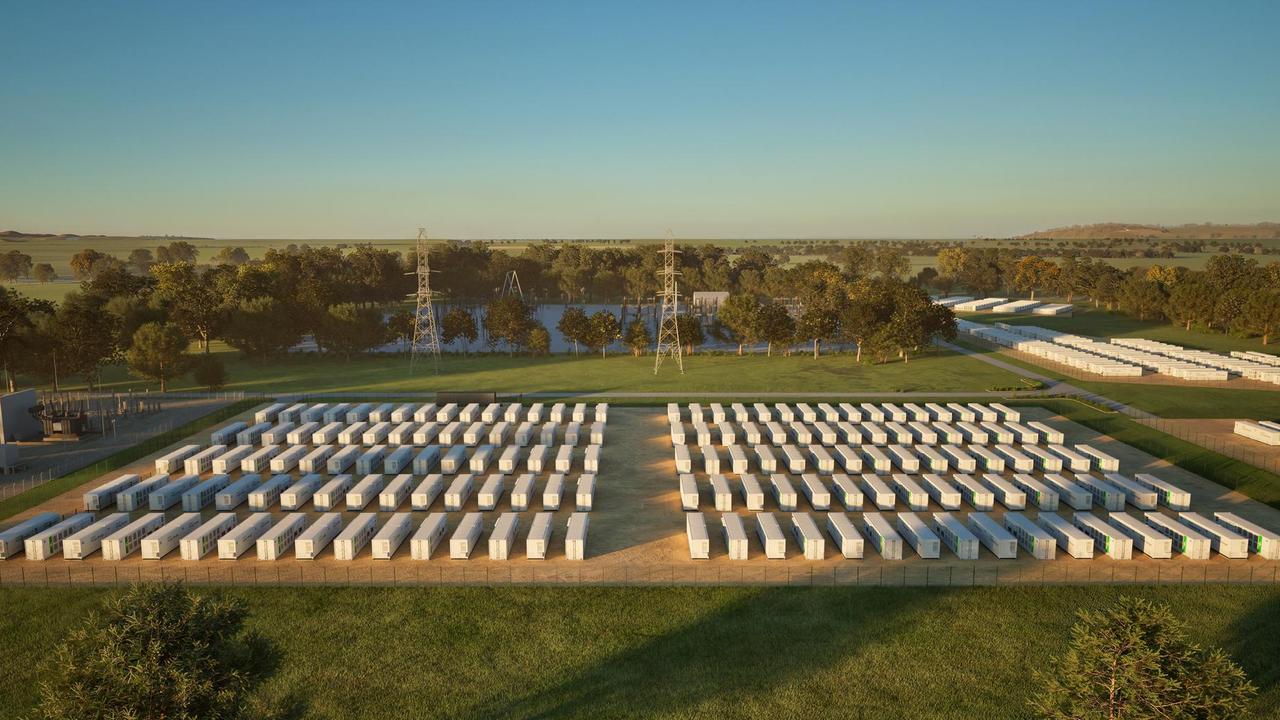Banks, miners set to drive Australia’s sharemarket in 2025
Banks were some of the best-performing large stocks of 2024 and iron ore producers were among the worst. These heavyweights are likely to again be the biggest drivers in 2025.

Business
Don't miss out on the headlines from Business. Followed categories will be added to My News.
Banks were some of the best-performing large stocks on the Australian market in 2024 and iron ore producers were among the worst.
These heavyweights could again be the biggest drivers in 2025.
While the S&P/ASX 200 index rose 7.5 per cent in 2024, banks outperformed with gains ranging from 9.8 per cent for ANZ and 41.2 per cent for Westpac. Commonwealth’s market capitalisation soared to $256bn, making it the world’s 13th-biggest bank and the most expensive bank on a price-to-earnings basis.
The rise in banks was a major surprise. A year ago, CBA’s share price was $111.80 and the 12-month consensus price target was $89.37, yet the stock price soared to $153.25 by year’s end.
At the same time, the iron ore miners underperformed, as did most other miners. Rio Tinto fell 13.4 per cent, BHP lost 21.8 per cent and Fortescue sank 37.9 per cent. Miners also seriously undershot expectations. BHP had been expected to rise 20 per cent.
Bank valuations soared as offshore investors sought replacements for large Chinese stocks that were cut from the MSCI Asia Pacific index, super funds increased their stakes amid a lack of bad news in the sector, and inflation increased equity market inflows, which found their way to bank stocks.
“The stunning outperformance of the bank sector was undoubtedly the investment story of 2024,” said Brendan Sproules, head of banks research at Citi.
Total annual returns from banks broke through the 40 per cent threshold for the first time since 2009. To the surprise of many institutional investors, banks beat the ASX 200 by about 20 per cent.
What stood out as unusual in 2024 compared to other outperforming years for banks was that growth in earnings and dividend per share was “almost non-existent”, Mr Sproules said.
The total return for bank shares in 2024 was almost entirely driven by a five-percentage-point rise in the average price-to-earnings multiple to an unprecedented 18.6 times.
“We think it’s likely the dislocating impact of excess inflation, which increased equity market inflows, which found its way into banks,” he added. “Looking into 2025, generationally high PE multiples, combined with the downside risks to earnings, has us staying Sell rated for banks.”

While in the past 20 years, excess inflation wasn’t a concern for portfolio managers, in 2024 there were very few asset classes where they could invest incremental funds that would protect their returns from the impact of inflation.
This led the overall Australian stockmarket to a record high despite very little forward earnings growth. But in the mining sector, despite an 8.7 per cent fall in the Australian dollar across the year (down 10 per cent from its peak in late September), the major iron ore producers underperformed as the commodity fell about 18 per cent.
Iron ore prices in September hit 12-month lows below $US90 a tonne amid weak growth in China – the world’s second-biggest economy and biggest consumer of most commodities. Iron ore had hit a two-year high above $US140 at the start of the year. However, investors were repeatedly disappointed with China’s unwillingness to do fiscal stimulus on the scale of that seen during the global financial crisis.
The biggest “known unknowns” for iron ore miners in 2025 at this stage are US trade policy and Chinese fiscal and monetary policy. US trade policy – and tariffs in particular – is expected to be clarified somewhat after the inauguration of Donald Trump on January 20.
After their important Economic Work Conference last month, Chinese policymakers said “lifting consumption vigorously” and stimulating their economy was their top priority. But specifics such as the growth target and budget will only be unveiled in March, during the annual legislative sessions when concrete steps are more likely to be introduced by relevant ministries.
In late November, stocks fell and the Australian dollar was hit by fear of a global trade war after Mr Trump vowed to tariff Chinese goods by an extra 10 per cent and slap 25 per cent tariffs on goods from Mexico and Canada in a bid to clamp down on migrants and illegal drugs.
Fund managers saw no obvious negative catalyst to spark a sustained sell-off in banks, and some fund managers remain bullish based on their expectations of economic recovery.
“Banks tend to be a good proxy for the economy,” Ausbil executive chairman and head of equities Paul Xiradis said.
“With economic growth improving and the potential for monetary easing to support consumer spending, we think that some exposure to the best banks and diversified financials is important in 2025.”
But with the average PE multiple of the major banks now above 18 times (CBA is currently above 25 times) versus long-term averages around 12 times, a sell-off in bank stocks might be sparked by an improvement in the outlook for iron ore miners, rather than bad news for banks.
For the biggest offshore investors who need sufficient liquidity in stocks they own, the Australian market basically comes down to a choice between big banks, miners and a handful of other major stocks. The fortunes of one sector can have the opposite impact on the other sector.
Switching between the two sectors was evident at various times in 2024 as various brokers reiterated that banks were overvalued, and also predicted that the miners were set to bottom.
Mr Sproules said the performance of the banks sector was “exuberated” by the very limited options available to large institutional investors across the Australian stockmarket.
“The revision of China’s growth prospects and the ensuing impact on key commodity prices saw a revaluation of many of the stocks across the resources sector,” he said.
“In the industrials stock universe, there has been very mixed revenue and earnings performance, largely depending on the ability of these companies to set the price of their goods or services.”
This pushed more investible funds into the bank shares, where earnings were supported by inflation-led loan growth, given the strong employment income growth and under-geared balance sheets.
Downward pressure on net interest margins abated amid a more rational market in 2024, while strong household and small-medium business income growth saw very low loan impairments.
Bank share buybacks and excess loan provisioning on the balance sheets has investors thinking this surety of earnings offered by the banks sector could last for some time. But the outlook is tricky as banks are intricately linked to inflation and interest rates.
If Australia endures a sticky inflation and rate environment, Mr Sproules expects an acceleration of higher bad debts and falling revenue versus costs, a scenario that would be much worse for valuations.
Originally published as Banks, miners set to drive Australia’s sharemarket in 2025



